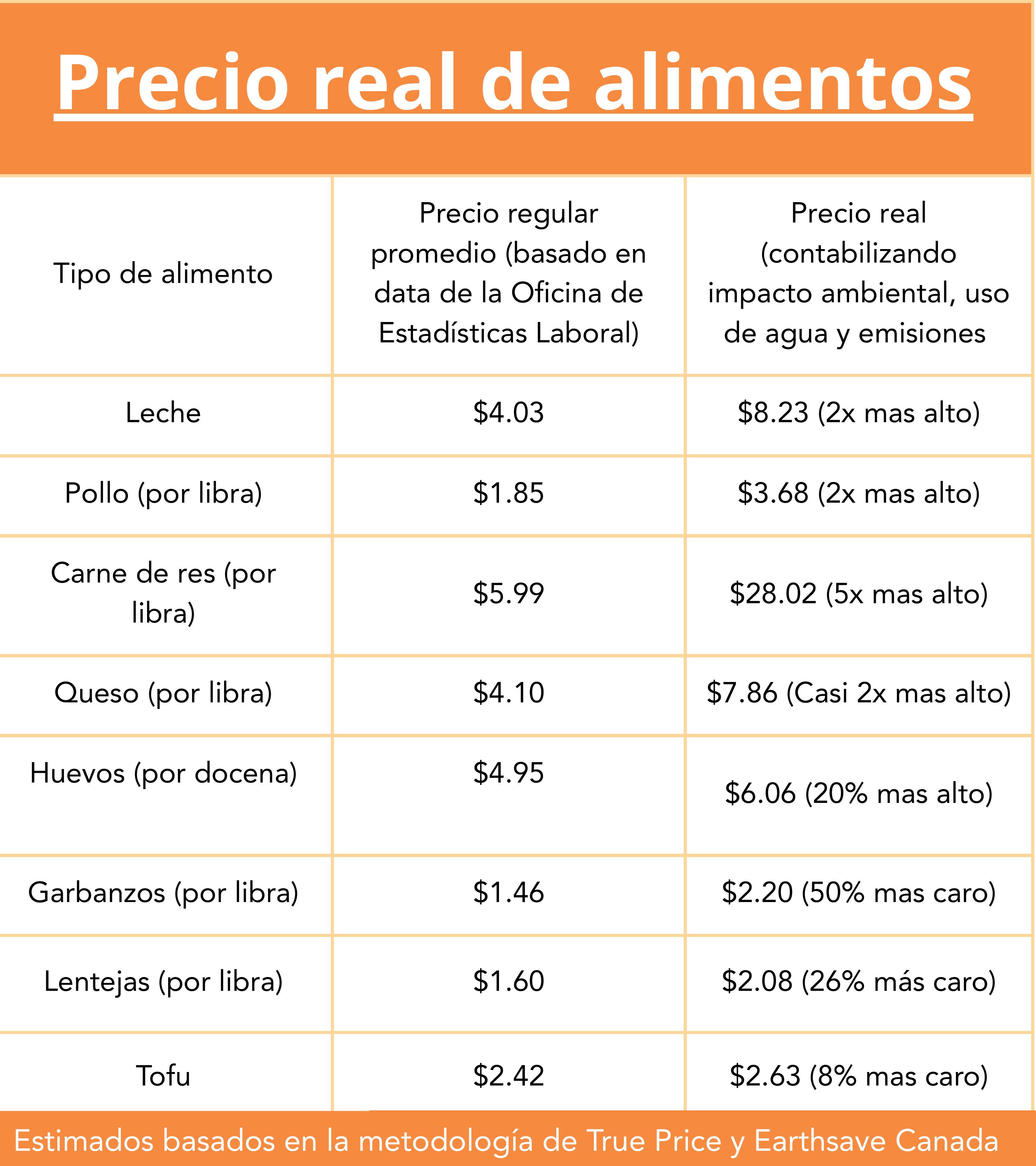
Medio ambiente
The Real Cost of Food
Por Nohan Meza
June 2025"We are what we eat" today goes far beyond a metaphor for healthy nutrition. It is a mirror that reflects consumer choices within food systems that govern supply chains and their impact not only on prices but also on the environment and health. The real cost of food is not just the price tag.
What the Label doesn't show
EDGAR, an independent global database on greenhouse gas emissions and air pollution caused by human activity, estimates that one third of global emissions come from agriculture. At the UN Food Systems Conference, it was shown that a pound of beef should cost nearly five times more than its typical purchase price. The excessive number of industrial farms focus solely on high production levels with little consideration for external impacts. These calculations consider the cost of land use for raising cattle and the methane they emit. There’s also an opportunity cost of what could have been done with the land and water instead.
The following table outlines the real costs of common food products. It is clear that if the true social and environmental price were considered, food would be much more expensive, with most items doubling their current price. In some cases, such as beef, the real price would be up to five times higher.
This “real cost” is also reflected in health indicators, environmental degradation (which ultimately affects local supply chains), and the local economy. The Farmers Market Coalition cites a series of studies by Civic Economics indicating that for every dollar spent at a supermarket chain, only 15 cents remain in the local economy. In contrast, every dollar spent at local businesses keeps between 30 and 45 cents in the community—double or nearly triple the impact. Chris Hewitt, executive director of the Hudson Valley Current (a local currency), urges consumers to consider that “a higher price could be more valuable to a community. Every dollar we contribute is a vote for the system we want to create.”
Rebuilding the Local Food Economy
Creating local commercial communities is essential to ensure the sustainability of our food systems. Accessible ways to reinforce the local economy include CSA farms (Community Supported Agriculture), local farmers markets, and community farms or home gardens.
Although not everyone can afford to pay more for sustainably produced food, even small changes—such as replacing some meat-based meals with plant-based ones—can offer significant environmental, health, and financial benefits. For example, chickpeas, beans, and lentils are protein-rich alternatives with minimal ecological downsides compared to various types of meat. They require little water, enrich the soil, and emit very few greenhouse gases.
Choosing local and seasonal products, supporting regenerative agriculture, and reducing food waste are also key. Hewitt notes, “It’s fascinating that we have a global supply chain that can bring us avocados and strawberries year-round, but I believe we can also contribute to strengthening the system to support farmers and local supply chains.”
The goal of these studies is not necessarily to raise food prices, but to raise consumer awareness so that, when shopping, they consider a variety of foods while factoring in environmental impact.
Resources:
CSA Farms: hudsonvalleycsa.org/
True Price, the real cost of food: trueprice.org/true-price-resources/
COPYRIGHT 2025
La Voz, Cultura y noticias hispanas del Valle de Hudson
Comments | |
| Sorry, there are no comments at this time. |

